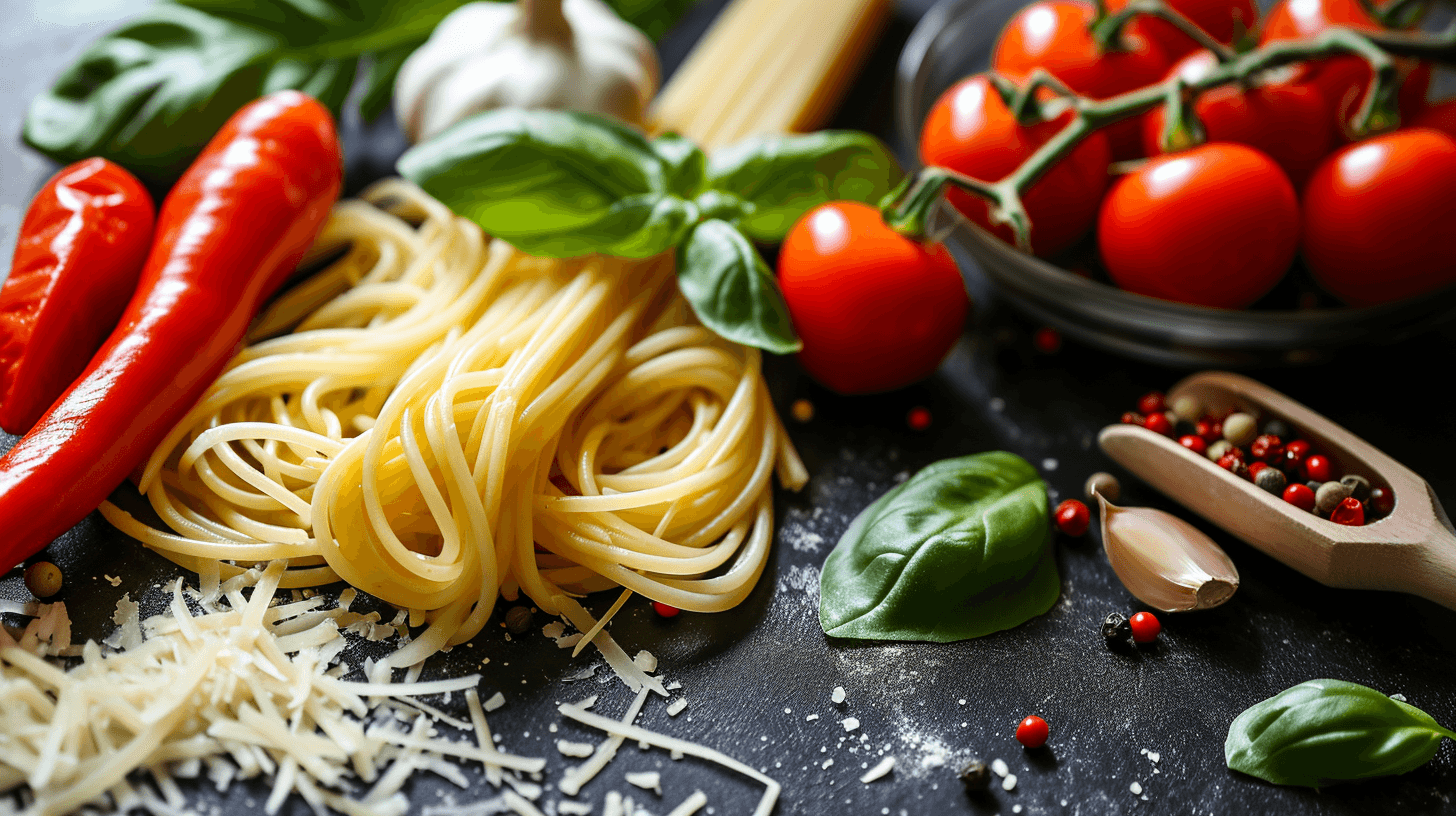- Preliminary Considerations
- Planning Your Menu
- Designing Your Space
- Culinary Team and Staffing
- Legal and Regulatory Compliance
- Marketing and Branding
- Financial Planning
- Grand Opening and Ongoing Operations
- Get Ready to Share Your Passion for Italian Cuisine with Customers
So, you want to give customers a taste of La Dolce Vita?
This comprehensive guide for independent restaurants will navigate the landscape of launching your Italian restaurant, from conceptualization to execution.
Whether you’re an aspiring restaurateur or a seasoned professional, our roadmap will guide you through the essential steps, strategic considerations, and nuanced decisions required to create a thriving Italian restaurant.
Preliminary Considerations
First things first. If you want to offer delicious Italian cuisine, having a professional chef is only part of the pandoro.
To ensure you get started on the right foot, consider the importance of market research and conceptualization.
Market Research
Identifying your target market
- Conduct a comprehensive analysis of the local demographic to understand the preferences and habits of potential customers.
- Consider factors like age groups, income levels, and cultural diversity in the area.
- Utilize surveys, interviews, and/or focus groups to gather insights into your target audience’s specific needs and desires.
Analyzing local competition
- Compile a thorough list of existing Italian restaurants and other competitors in the area.
- Evaluate their strengths, weaknesses, and overall market positioning.
- Identify market gaps or opportunities that your own restaurant can capitalize on.
- Consider conducting secret shopper visits to gather firsthand experiences and insights.
Conceptualization
Defining your restaurant’s unique selling points
- Clearly articulate what sets your Italian restaurant apart from others in the vicinity.
- Identify unique features, such as signature dishes, exceptional service, or a particular ambiance that will distinguish your establishment.
- Consider incorporating elements that reflect your passion for Italian cuisine, creating a genuine and memorable customer experience.
Deciding on a specific regional focus within Italian cuisine
- Explore the diverse regional cuisines of Italy, each known for its distinct flavors and specialties.
- Consider aligning your restaurant with a specific regional focus, whether it’s the robust flavors of Southern Italy or the more nuanced dishes of the North.
- Tailor your menu and ambiance to represent the chosen region authentically, providing diners with a cohesive and immersive experience.
Partner with popular delivery apps
- By leveraging the widespread user base of these delivery apps, you tap into a vast pool of potential customers, increasing visibility and accessibility.
- Embracing such apps offers convenience to your existing customers and opens doors to new clientele, providing a seamless way for them to savor your authentic Italian dishes from the comfort of their homes.
You lay the foundation for a successful Italian restaurant by undertaking thorough market research and thoughtful conceptualization.
Planning Your Menu
The Importance of Authenticity
Authenticity is the secret ingredient that makes your Italian restaurant special. It’s about capturing the real flavors and experiences of Italy.
When your food tells a genuine story, it connects with customers, making their visit a meal and a journey.
Classic recipes from different regions of Italy can be a great starting point. For example, offer:
- Pasta Bolognese: A hearty dish from Bologna featuring a rich meat sauce served over fresh pasta.
- Margherita Pizza: A simple yet iconic pizza with tomato, mozzarella, fresh basil, and a drizzle of olive oil.
- Osso Buco: A Milanese specialty of braised veal shanks in a flavorful broth.
Balancing Tradition and Innovation
Mixing old favorites with a dash of something new brings excitement to your menu. It’s about keeping the classic Italian dishes people love while adding a modern twist.
This mix keeps your menu interesting and appeals to a broad range of tastes.
For instance:
- Truffle Infused Risotto: A contemporary take on the classic Italian risotto infused with the earthy flavors of truffles.
- Caprese Salad with a Twist: Present the traditional Caprese salad in a deconstructed or layered form, adding a creative touch to the familiar.
- Dessert Amalgamation: Combine traditional desserts like Tiramisu with innovative elements, such as unique flavor infusions or creative plating.
In the process of planning and managing your Italian restaurant’s menu, Orders.co can be an invaluable asset.
With our AI-powered menu management system, you can effortlessly craft and adjust your menu to reflect the authenticity and innovation that defines your culinary vision.
This tool allows you to seamlessly integrate traditional Italian recipes with modern twists, ensuring that your offerings remain appealing and relevant.
Designing Your Space
Creating an Authentic Ambiance
The atmosphere of your restaurant is like the background music to a great meal. Designing an authentic ambiance means making your place feel like a cozy spot in Italy.
From warm lighting to the right colors, every detail adds up to a real Italian experience.
Here are a few practical ideas to bring that authentic touch to life:
- Warm Lighting: Opt for warm, ambient lighting reminiscent of a cozy Italian trattoria. Consider pendant lights, chandeliers, or string lights to create a welcoming atmosphere.
- Earthy Tones: Choose a color palette inspired by the rustic landscapes of Italy. Warm, earthy tones like terracotta, olive green, and muted yellows can add a touch of authenticity to your space.
- Mediterranean Music: Play soft Italian or Mediterranean music in the background. It sets the mood and transports diners to the charming streets of Italy.
- Open Kitchen Restaurant Concept: If feasible, consider an open kitchen where diners can catch a glimpse of chefs at work. This not only adds an interactive element but also emphasizes transparency in your cooking.
Choosing Décor Elements
Here are practical ideas for choosing decor elements:
- Traditional Artwork: Adorn your walls with traditional Italian artwork, such as paintings depicting scenic landscapes, historic Italian architecture, or even classic art inspired by Italian masters.
- Rustic Furniture: Invest in rustic wooden tables and chairs to evoke the feeling of a countryside trattoria. The imperfections and aged look add character to the space.
- Herb Gardens: Place small herb gardens on tables or near the entrance. This adds a fresh, aromatic element and reinforces the connection to authentic Italian cooking.
- Vintage Italian Posters: Decorate walls with vintage Italian posters featuring classic Italian movies, travel destinations, or food and wine advertisements for a touch of nostalgia.
Culinary Team and Staffing
Hiring Skilled Chefs and Kitchen Staff
The people in your kitchen create the main performance.
When hiring, look for cooks who know their way around the kitchen and have a passion for Italian food. (It helps if they have Italian blood and know their way around the kitchen!)
Training Staff on Italian Culinary Techniques
Make sure everyone knows the ins and outs of making authentic Italian food. This way, every plate that leaves the kitchen tastes like Italy.
Accuracy in order processing, timely reservations, and a comprehensive understanding of customer preferences are also crucial elements that contribute to the success of your Italian restaurant.
Think of using efficient software to equip your team with special moves that elevate your dishes to a whole new level, ensuring that each plate leaving the kitchen reflects the authentic flavors of Italy.
Orders.co, is designed to improve restaurant operations and plays a pivotal role in consolidating all your orders in one platform.
By incorporating Orders.co into your restaurant’s workflow, you empower your staff to manage orders, reservations, and customer data efficiently in real-time.
Legal and Regulatory Compliance
Acquiring Necessary Business Licenses and Permits
Navigating the world of licenses and permits can be complex, but there are reliable online resources to guide you through the process.
Websites like SBA.gov (Small Business Administration) and SCORE offer comprehensive information on the licenses and permits required to start a restaurant.
These platforms provide checklists, guides, and direct links to relevant authorities, making it easier for restaurant owners to understand and fulfill legal requirements.
Complying with Health and Safety Regulations:
Ensuring your restaurant meets health and safety standards is crucial for both customers and staff. The Food and Drug Administration (FDA) website provides detailed guidelines on food safety, sanitation, and health regulations.
Additionally, the Occupational Safety and Health Administration (OSHA) website offers resources specifically tailored to the safety of restaurant workers. Regularly checking these resources helps you stay informed about any regulation updates or changes.
Supply Chain and Vendor Relationships
Sourcing Authentic Ingredients
When it comes to sourcing authentic ingredients, knowing reliable suppliers is key. Platforms like ThomasNet provide a comprehensive directory of suppliers across various industries, including food.
Additionally, connecting with local farmers and specialty food producers through platforms like LocalHarvest can be a valuable resource for fresh, authentic ingredients.
Building Strong Relationships with Suppliers
Building strong relationships with suppliers often involves negotiation and clear communication. SCORE offers templates and guidance on supplier agreements, helping you establish mutually beneficial relationships.
Additionally, utilizing business directories like Yellow Pages can assist in finding and vetting potential suppliers in your area.
Marketing and Branding
Creating a Unique Brand Identity
Crafting a unique brand identity is crucial for standing out in the competitive Italian restaurant industry.
Online design platforms such as Canva and LogoMaker allow you to create professional-looking logos and branding materials even if you need design expertise.
These tools offer templates and customization options to help you develop a distinct brand image.
Developing an Online and Offline Presence
Establishing both online and offline presence requires strategic marketing.
Online platforms like Google My Business, for instance, help you manage your restaurant’s online presence.
By being listed in various local directories such as Yelp, TripAdvisor, and Zomato, your restaurant gains increased exposure, making it more likely for patrons to discover and engage with your establishment.
Expanding your presence beyond Google My Business ensures that your restaurant is visible to a diverse audience, exploring different platforms for recommendations and reviews.
Each directory offers a unique user base, and being present on multiple platforms broadens your reach, catering to varying preferences and search behaviors.
Orders.co acts as a dynamic catalyst to strengthen your restaurant’s local presence, contributing significantly to increased visibility, heightened awareness, and improved search engine optimization (SEO) and Google ranking.
By seamlessly integrating with various local directories, Orders.co expands your reach, making your restaurant more discoverable across different platforms.
In addition to improving your restaurant’s online and offline presence through various local directories, Orders.co offers comprehensive marketing solutions to grow your audience.
Its AI-powered integration automates the distribution of coupons and offers via SMS and email marketing, ensuring efficient and hassle-free delivery to customers.
This includes automated text campaigns, text coupons, promotion of new items, and a mobile loyalty program.
Orders.co’s approach to marketing also extends to printed materials, providing tools like printed QR cards and menus aiding in educating guests about direct ordering from your custom website.
As for social media, consider scheduling tools like Hootsuite to refine your social media efforts. Offline, partnering with local community organizations, and leveraging traditional marketing materials.
Financial Planning
Estimating Initial Investment and Creating a Realistic Budget
Getting started requires a business plan and budget. Estimating your initial investment means figuring out how much money you need to set up everything—from the kitchen to the tables and chairs.
Making a budget is like planning how to spend your money wisely. It involves figuring out how much you’ll spend on things like staff, utilities, and marketing. A realistic budget helps you stay on track.
- Calculate Startup Costs: Include expenses for kitchen equipment, furniture, decor, initial inventory, and renovation.
- Plan for Operating Expenses: Budget for ongoing costs like salaries, utilities, rent, and food supplies.
- Allocate for Marketing: Set aside funds for promotional activities, both digital and traditional.
- Consider Contingency Funds: Prepare for unexpected expenses by having a reserve fund.
- Monitor Cash Flow: Keep track of incoming and outgoing funds regularly.
- Seek Professional Advice: Consult with financial advisors or accountants for precise budgeting and financial planning.
Grand Opening and Ongoing Operations
Executing a Memorable Grand Opening
The grand opening is like the main event of your restaurant’s story. It’s a big celebration that marks the beginning of your journey. Planning it well ensures a memorable start.
Here’s a step-by-step guide to executing a memorable grand opening:
Invitations and Teasers
- Send out invitations to local influencers, food bloggers, and the community.
- Tease the event on social media with captivating posts, creating anticipation.
Decor and Atmosphere
- Decorate the restaurant with vibrant colors, Italian flags, and thematic elements.
- Consider hiring a live band or musicians playing traditional Italian music to set the mood.
Menu Showcasing:
- Offer a curated menu showcasing a variety of your signature dishes.
- Consider providing small tasting portions to allow guests to sample a range of flavors.
Special Promotions:
- Introduce special promotions for the grand opening, such as discounts for the first 100 customers or complimentary drinks with meals.
- Collaborate with local businesses for joint promotions to attract a wider audience.
Live Demonstrations:
- Have live cooking demonstrations where chefs prepare signature dishes in front of the guests.
- Engage with the audience, explaining the uniqueness of each dish and sharing interesting culinary anecdotes.
Gifts and Giveaways:
- Offer branded merchandise or small Italian-themed gifts to the first few customers or those who share their experience on social media.
- Conduct a raffle with exciting prizes to encourage participation.
Social Media Engagement:
- Create a branded hashtag for the event and encourage guests to share their experiences on social media.
- Engage with online mentions, respond to comments, and share user-generated content to amplify the event’s reach.
Community Engagement:
- Involve the local community by inviting neighboring businesses, schools, and residents.
- Consider partnering with a local charity and donating a percentage of the grand opening day’s proceeds.
Photography and Media Coverage:
- Hire a professional photographer to capture key moments of the grand opening.
- Reach out to local media outlets for coverage, providing them with a press release and inviting them to the event.
Feedback Collection:
- Set up a feedback station to gather opinions and suggestions from guests.
- Use this feedback to improve immediately and show your commitment to customer satisfaction.
Nurturing Customer Relationships
Building good relationships with customers involves providing excellent service, being friendly, and ensuring customers feel valued. Happy customers often become regulars.
Consider setting up a loyalty program that rewards customers for their repeat business. With a loyalty program, customers can earn points for each visit or purchase, eventually redeeming them for discounts, free items, or special offers.
Orders.co offers valuable tools to improve customer relationships for your Italian restaurant. Its Guest Feedback Monitoring system allows you to proactively manage your restaurant’s reputation by tracking customer reviews and feedback across various platforms.
This feature helps you understand customer experiences, identify areas for improvement, and respond promptly to feedback.
Additionally, Orders.co’s AI-assisted Loyalty Reward Program is designed to boost customer retention and spending.
It enables personalized experiences and rewards, encouraging repeat visits and fostering long-term customer relationships.
Get Ready to Share Your Passion for Italian Cuisine with Customers
Every step and consideration discussed in this guide is a piece of the puzzle that makes up the big picture of opening and running an Italian restaurant business.
If you’re envisioning a thriving future for your restaurant, look no further than Orders.co. Our platform offers more than just order management; it’s a comprehensive solution designed to support your restaurant’s growth in every aspect.
From seamlessly integrating with local directories to boosting online visibility, growing brand awareness, and boosting SEO and Google ranking, Orders.co provides a suite of services essential for the development and success of your establishment.
Consider Orders.co as your all-in-one solution for operational excellence and sustained growth!
Contact us today to explore how our platform can empower your restaurant into a standout success in the dynamic and competitive restaurant industry.



